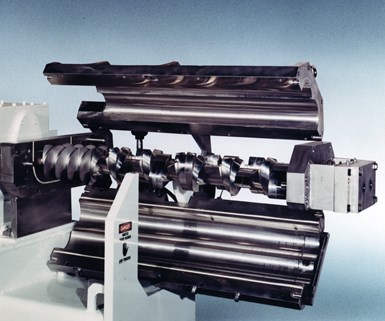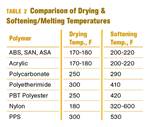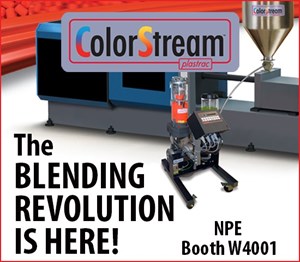Compounding: Continuous Processor Features Double Clamshell Barrel Design
Provides easy cleaning and inspection.
Continuous Processors from Readco Kurimoto LLC, York, Pa. feature an optional, double clamshell barrel design that allows 360° access to the entire paddle and screw assembly to promote thorough, complete cleaning, confident visual inspection and easy adjustments to the configuration. Eliminating the need for cumbersome cranes and hoists often used to raise the barrel, the double clamshell design enables the barrel top, bottom, or both top and bottom to be easily opened at the push of a button. Once opened to reveal the interior, the Readco system automatically locks the barrel in the open position for safe cleaning and maintenance. When ready, the double clamshell barrel closes at the push of a button, sealed and ready for operation.

The double clamshell design is said to virtually eliminate the potential for cross-contamination, providing valuable versatility for processors interested in producing multiple product formulations with powders, liquids and/or viscous materials on a single, compact unit. Continuous Processors with the double clamshell design are custom-engineered to suit each installation based on product testing conducted on full-size equipment in the company's on-site testing laboratory, says Readco.
Related Content
-
Processing Megatrends Drive New Product Developments at NPE2024
It’s all about sustainability and the circular economy, and it will be on display in Orlando across all the major processes. But there will be plenty to see in automation, AI and machine learning as well.
-
Engineering Resins Compounder Expands to Take on More Scrap
Polymer Resources responds to sustainability push by upgrading plant with grinding and shredding equipment to take on both postindustrial and postconsumer reclaim.
-
How to Configure Your Twin-Screw Extruder -- Part 2
Follow these tips to configure your twin-screw elements to promote feeding and solids conveying.












